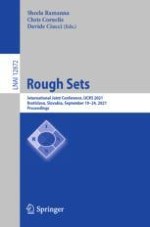2021 | Buch
Rough Sets
International Joint Conference, IJCRS 2021, Bratislava, Slovakia, September 19–24, 2021, Proceedings
herausgegeben von: Sheela Ramanna, Chris Cornelis, Davide Ciucci
Verlag: Springer International Publishing
Buchreihe : Lecture Notes in Computer Science
